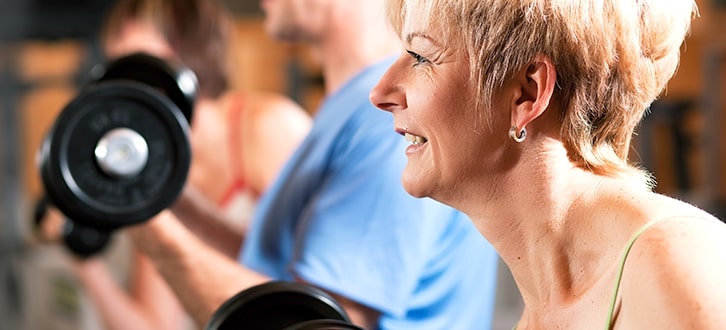National Osteoporosis Awareness and Prevention Month
Author: CenterWell Pharmacy
Date Posted: May 07, 2019

May is National Osteoporosis Awareness and Prevention Month. It’s a great time to learn more about osteoporosis, who can be at risk and how to best prevent and treat it.
Osteoporosis affects approximately 10 million Americans, and 44 million are at risk. It can affect both men and women of all ethnicities.¹ Worldwide, 1 in 3 women and 1 in 5 men have osteoporosis.²
The bare bones of it all
Bones are made up of living tissue that is constantly breaking down and being replaced. Osteoporosis occurs when new bone isn’t generating at the same speed that the old bone is deteriorating. When you’re young, new bone grows faster than old bone that is breaking down, so you have healthy bone mass. As you age, bone growth slows and bones wear down faster. This can cause bone mass to decrease, which contributes to osteoporosis.³
Risks
Osteoporosis risk factors range from lifestyle to family history. Here are some risk factors that can contribute to osteoporosis:
• Sex – Women are more likely to develop osteoporosis.
• Age – As you get older, the rate of bone tissue breaking down increases.
• Race – White and Asian women are more likely to get osteoporosis.
• Family history – If you have any family members who had osteoporosis, you are more likely to develop it.
• Body size – People with small body frames are more likely to have osteoporosis.
• Hormones – Imbalanced hormone levels can weaken bones. A decline in testosterone and estrogen, which occurs as we age, along with an excess of thyroid hormones, can contribute to bone loss.
• Drinking and smoking – Alcohol and tobacco use also can affect bone mass.
Prevention and treatment
Medicine
While there is no cure, a doctor can prescribe medicine that may help reduce the risk of bone fractures and slow the breakdown of bone tissue. Talk to your doctor about what drugs are available and what may work best for you.⁴
Nutrients
Getting enough calcium and vitamin D is important for bone health.
While it is recommended to get calcium from food sources, if that’s not possible, supplements may help.
Vitamin D is difficult to get from food, but there is fortified milk and orange juice. A major source of vitamin D is sunlight, as well. If you are still lacking in vitamin D, talk with your doctor about the possibility of taking supplements.⁵
Exercise
Sitting all day long or getting little to no physical activity can contribute to weak bone health. To strengthen bones, incorporate exercise into your week. To build muscles and bone health, the Mayo Clinic recommends combining strength training with weights and balance exercises.⁶
Here are more tips on keeping bones strong.
Bone density test
If you think you’re at risk for osteoporosis, you may benefit from getting a bone density test. The test is generally painless and takes about 15 minutes.
Find out more about the bone density test and schedule an appointment with your doctor.
This material is provided for informational use only and should not be construed as medical advice or used in place of consulting a licensed medical professional. You should consult with your doctor to determine what is right for you.
Sources:
- “Fast Facts about Osteoporosis,” National Osteoporosis Foundation, last accessed April 2, 2019, http://www.bonehealthandosteoporosis.org/wp-content/uploads/2016/04/Fast-Facts-About-Osteoporosis.pdf.
- “64 Interesting Facts about Osteoporosis,” Fact Retriever, last accessed April 2, 2019, https://www.factretriever.com/osteoporosis-facts.
- “Medication and Treatment Adherence,” National Osteoporosis Foundation, last accessed April 2, 2019, https://www.bonehealthandosteoporosis.org/patients/treatment/medicationadherence/.
- “Medication and Treatment Adherence.”
- “Osteoporosis,” Mayo Clinic, last accessed April 2, 2019, https://www.mayoclinic.org/diseases-conditions/osteoporosis/symptoms-causes/syc-20351968.
- “Osteoporosis.”